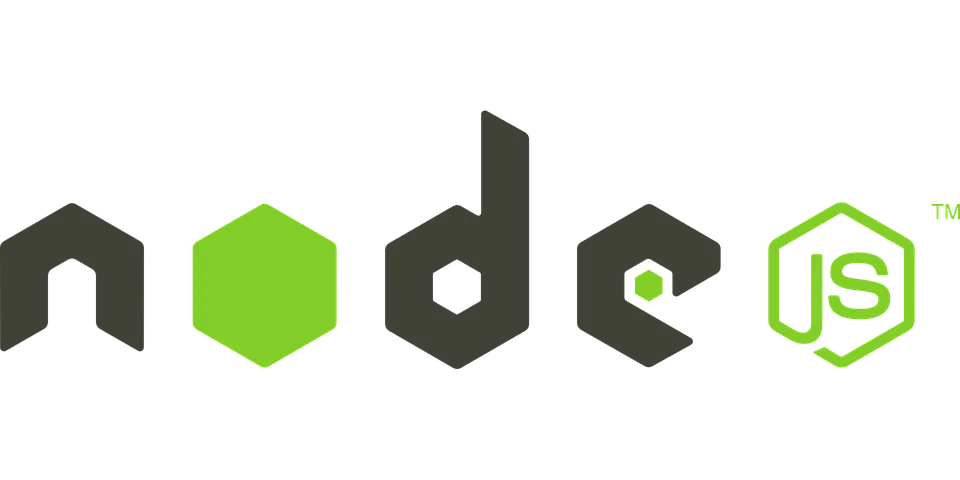Redefine Creativity
AI Image Editor
Free browser-based tool for stunning visual creations
9 min to read
The Node is currently the world’s most popular technology that is opening up infinite career possibilities for any developer who is looking for potential for growth in this field. You can create different applications, such as apps for social media, instant messaging platforms, apps for real-time monitoring, online gaming, and tools for collaboration.
Several companies, including PayPal, LinkedIn, Uber, GoDaddy, Walmart, and more have already moved their tech needs to Node.js.
However, most people make a rookie mistake wherein they just start learning a language or framework without setting a target as to what purpose will it serve.
It is one thing to learn a language or two for passion and another to apply the knowledge in real-world applications, and as a programmer, your goal should be to be able to develop things and not only to learn.
Once you have a clear goal in your mind, you will already be half-ready to become a far better Node.js Developer in 2022.
We have rounded some of the top-notch ways you can incorporate to become a better Node.js Developer. Before that, let us understand what Node.JS is mostly about.
Node.js is an open-source, cross-platform, server-side, JavaScript runtime environment that executes JavaScript code outside a web browser. It compiles the JavaScript code into the native code of the computer and boosts the performance of the application. It offers a non-blocking input-output mechanism that is event-driven.
This makes it ideally suited for the development of a fast, highly stable, scalable web application and also a real-time data-intensive application.
Node.js offers good performance and greater consistency, which is why businesses use it extensively to create massive, flexible single-page apps, video streaming apps, and web apps.

NodeJS also offers a range of frameworks that enable the development of the application with great features. Writing code from scratch to create multiple unique features in any application can be a time taking operation. So it makes your job simpler to use the framework in your application and you create any kind of function quickly. We have listed some of the most famous Node.js frameworks.
It’s the job of a Node.js developer to write server-side web application logic in JavaScript. Typically, they are responsible for creating back-end modules, linking the app to other web services (often from third parties), and helping front-end developers by integrating their projects with the Node.js application.
Their primary goal would be to guarantee high efficiency and responsiveness to front-end requests.
Strong JavaScript expertise builds the foundation for being a good Node.js developer You will take lesser time and effort if you have an adequate amount of JavaScript knowledge and will be all set for Node.js.
However, if you lack JavaScript knowledge, then you must incorporate that into your schedule right away.
Let’s have a look at the skills you must have in order to become a hotshot Node.JS Developer:
Now that we covered the important skills that one must have in order to become a good Node.js developer, let us start with other factors that you must acquire in order to become a professional. What are these factors and how can you implement them? Let’s read ahead to know more…
It is pretty simple to install Node. A stable version of Node.js can be downloaded from the Node.js official website. You have the option to install Node.js based on your OS and system configs, and then you are allowed to begin working on it instantly. To use Node.js, ensure that your RAM is at least 4 GB.
One of the most significant basic foundations to explore in Node.js is the node package manager. NPM offers 80k+ libraries that can be used for multiple uses. In Node.js, such prebuilt libraries have their own code to create various functions.
With the NPM command, you can easily install the appropriate library and implement it in your app. These libraries, therefore, help a lot to accelerate the process of application development.
Another basic and perhaps most useful component to know in Node.js is the JSON file. When you use Node.js, the first-ever thing you do is create JSON files. It works as the manifest file that you can locate with the name package.json in your app. It includes the project’s metadata.
In simpler terms, including the script used in the project, it maintains and keeps the data about packages and dependencies. You may easily open this file and review the details if you ever have to review which packages or dependencies are made to use in the application.

In reality, Typescript offers two mutually exclusive deals i.e. type-safety and advanced design structures (that includes advanced docs and IntelliSense). For improved type safety, many people use Typescript inadvertently, without proper preparation, while also using its advanced features, generics, abstract classes, interfaces, namespaces, etc.
Because of the ‘law of the instruments,’ these people unconsciously shift their design style from vanilla JavaScript to fancy OOP, a cognitive bias that requires using the tooling to reach whether or not they are the correct option for the task.
DevOps can seem important to different people. At the very least, developers are supposed to consider the production run-time as it significantly impacts coding decisions and trends. Mainly, the choices that reside at the intersection of Dev and Ops.
It is a well-known procedure to make sure that all outgoing requests are replayed on failures (the pattern of the circuit breaker), this can be accomplished using K8S Istio on the infrastructure level or using dedicated packages on the code itself.
In 2021, you should not outsource protection work to third-party businesses, or depend exclusively on static security scanners: the number of malicious activities is enormous (the ongoing trends are the development pipeline and NPM).
Providing training to the developers is the secret i.e. incorporating security DNA within yourself and your company and adding a security element to it all. A helpful way to improve your knowledge of security is to go through vulnerable code and attack vector instances.

Monitoring is a vital mechanism that should be fully established and encourages compliance between Dev and Ops. Without the participation of developers, no monitoring system can be ideal.
ELK and Prometheus, these two common monitoring systems, sound like sys admin toys, but in reality, developers can learn a great deal by configuring them. The compulsory practice for developers would be in any scenario concerned with exposing the metrics.
Nothing would increase your motivation and efficiency than understanding that your deployment engine catches mistakes before your users do. This can happen with a collection of strategies.
Each one accomplishes this in its own way, but the general concept is the same, serving a small number of users with the next iteration and testing whether it appears robust. In this method, we actually distinguish the process of deployment from the phase of launch.
In version 11.7, there is an introduction of a new element in the async toolbox, i.e. worker thread. As with every other tool, this will fix a very unpleasant blindspot in a node. If 100% of the requests are CPU-intensive, no web framework like Go and Java can come close to that.
A more common workload, however, is when only 1-10% of requests pick up the CPU for a long time, which would be prevented immediately by most non-Node frameworks (thread per request). Node.js is enough for 1 to be CPU-intensive while serving 1000 req/sec, so all the remaining 999 suffer. There was no cure for this suffering. However, an exceptional fact now is that a dedicated event loop will spin up worker threads so that the main one can stay snappy.
This point is mainly projected toward machine learning (ML) beginners who work for items that are not heavily dependent on ML. If we only understand normal ML needs and solutions, we can do much better so that we absorb those whenever a need occurs.
Without extensive knowledge of the implementation, the JavaScript ML environment has matured to a point where there are several reliable libraries that can deliver high benefits.
Developers are in demand throughout the world, but Node.JS developers seem to be getting a whole spectrum of attention; so much so that it is among the top 10 most in-demand jobs, the number of jobs for Node.JS developers alone has increased by around 2500%.
Java is extensively used for developing complex web-based applications with a Java-built framework already provided, while Node JS is better suited for interactive real-time drawing or editing applications such as Google Docs.
You can easily learn Node.JS if you already have good programming experience and you are well-acquainted with JavaScript. If you have decent development experience but no knowledge of JavaScript (the programming language of Node.js), it may take around 2-6 weeks to learn Node.
Node.JS is primarily used for non-blocking, event-driven servers, due to its single-threaded nature. It’s used for traditional websites and back-end API services but was designed with real-time, push-based architectures in mind.
Node.js can be incredibly efficient and people have made comparisons where low-level languages such as C and C++ are the only thing that outperforms Node.js. Not only is this a relatively quick device, but it has the world’s largest package ecosystem.
Node.js is an invaluable platform that is not only suitable for creating the backend but it also has become the preferred way for a mobile app, web app, or even the Internet of Things (IoT) to build an API.
To conclude, Node.JS is undoubtedly one of the most popular platforms for creating web applications and is likely to only gain traction in 2021. The most essential factor to be aware of in order to learn Node.js is JavaScript. Don’t fall into the trap of learning to get started with Node before or until you have a decent knowledge of JavaScript.
You will use a lot of JavaScript principles, regardless of what you are going to create with Node.js. When you’ve got a strong JavaScript command, switch to Node.js and explore the tools, frameworks, etc that work around it.
There are a whole lot of platforms available on the internet today via which you can learn the basic concepts. It is also possible to get overwhelmed by the abundance of resources and learning material available, but don’t get confused. You need to be patient, do your research, and remain committed to it.
Take into account that if you don’t start coding now, hardly any of the tutorials or courses will teach you any language or framework. So code while you learn on your own and develop some applications.
You can also look to hire Node.js developers if you have an ongoing project that requires expert skills. This will allow you to complete your projects on time and efficiently.
Ans- According to Statista, based on their early 2020 research they found Node. js to be the most desirable by at least 18.1% of the respondents.
Ans- Node. js is as relevant as ever and worth learning, especially if you are a JavaScript developer. Being a JavaScript developer gives you a headstart since you already know the language used in Node. Moreover, if you are a Front-end Developer, you can transition and become a Full-stack Developer by learning Node.
Need expert guidance? Connect with a top Codersera professional today!